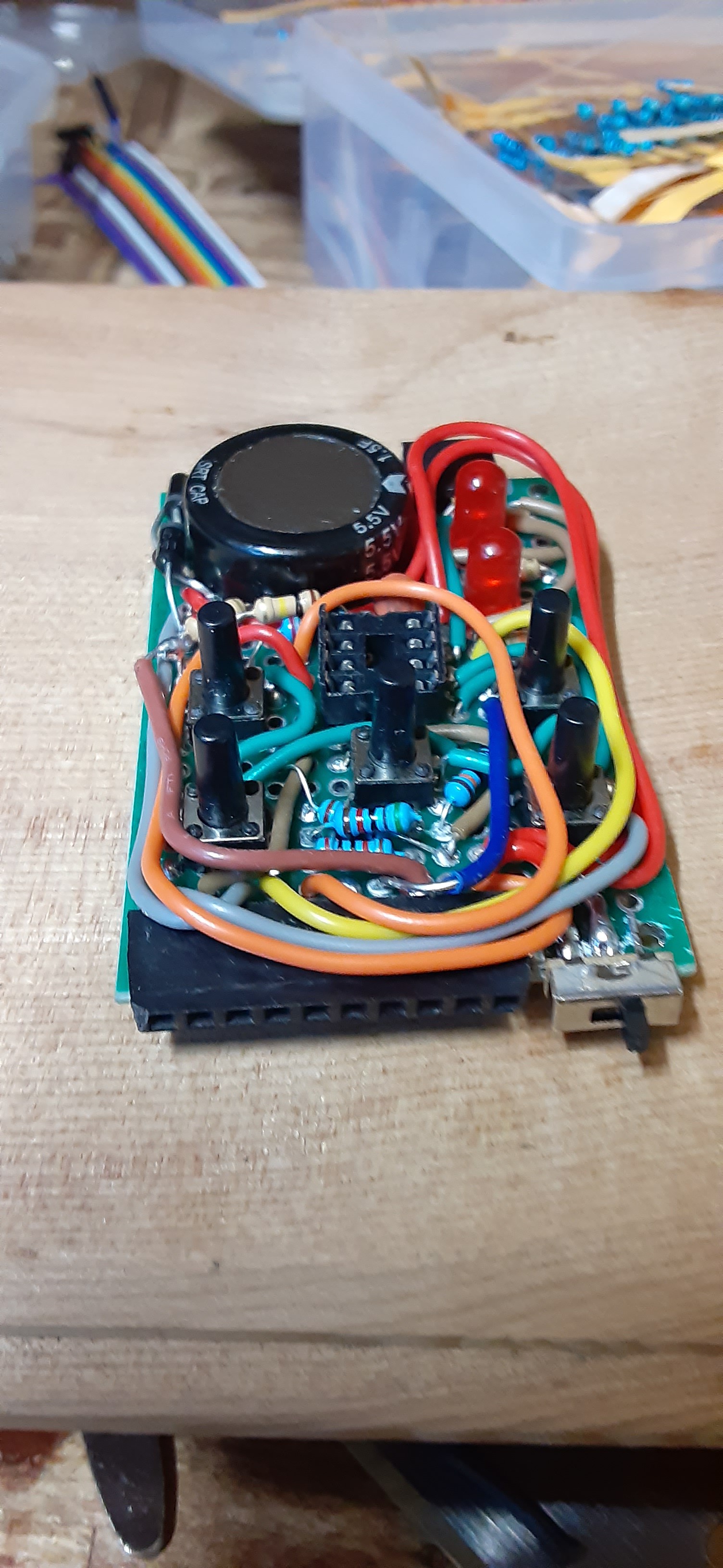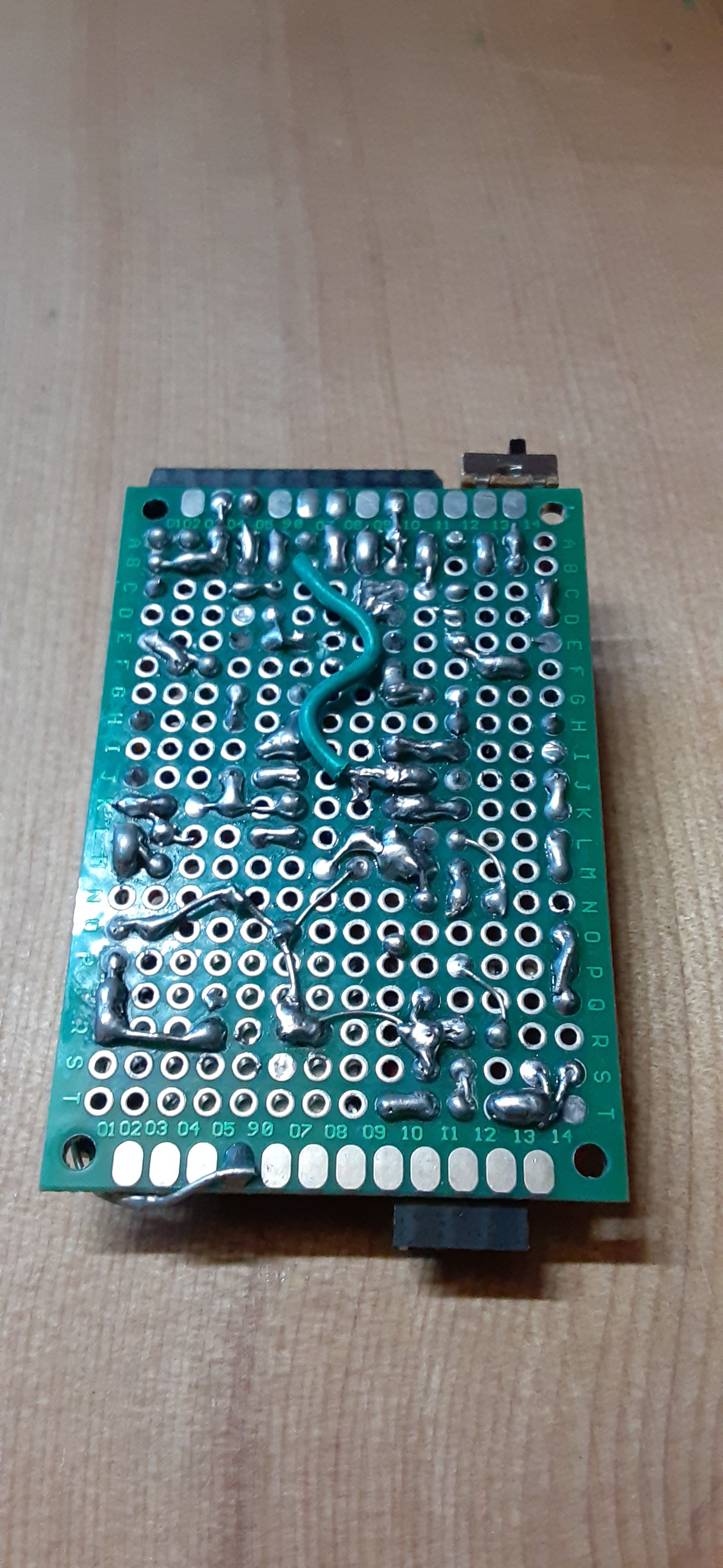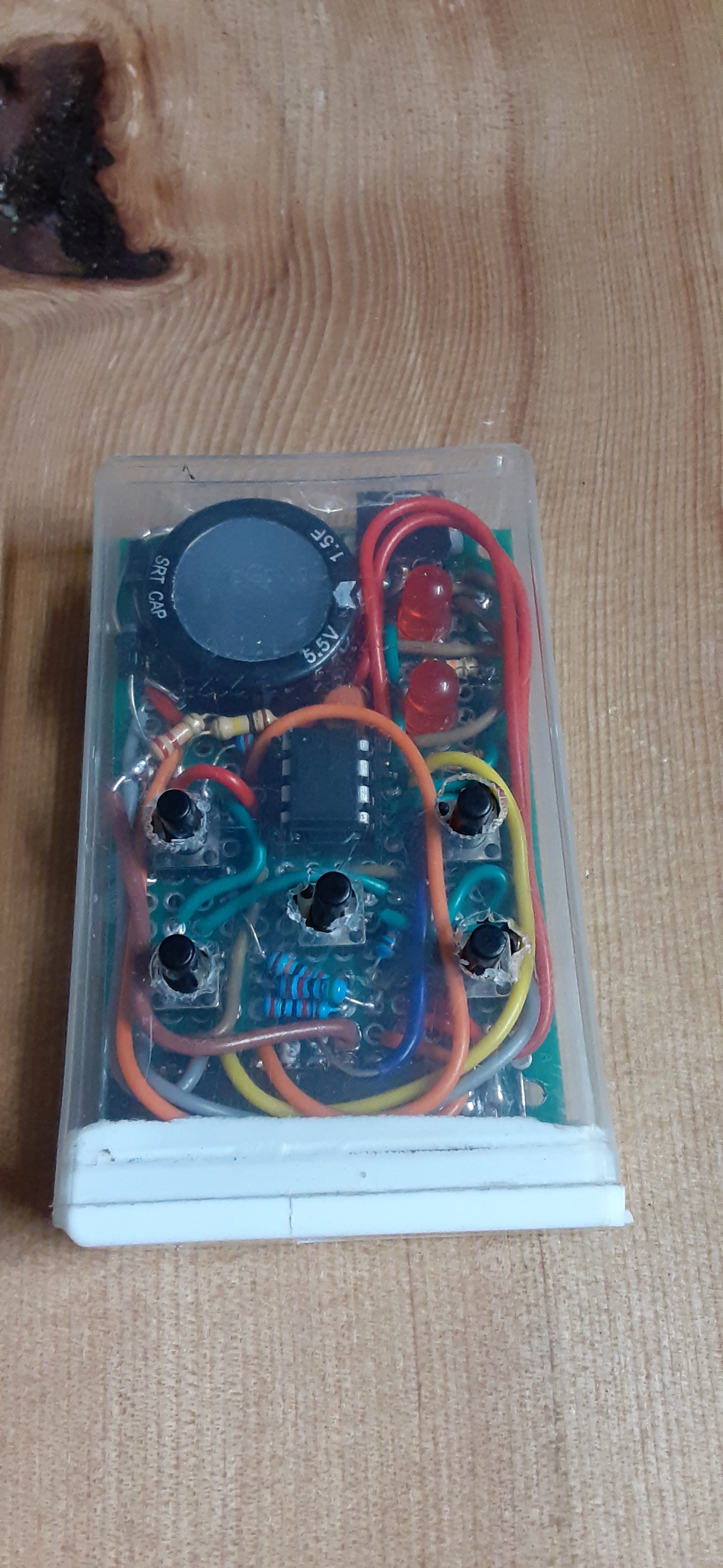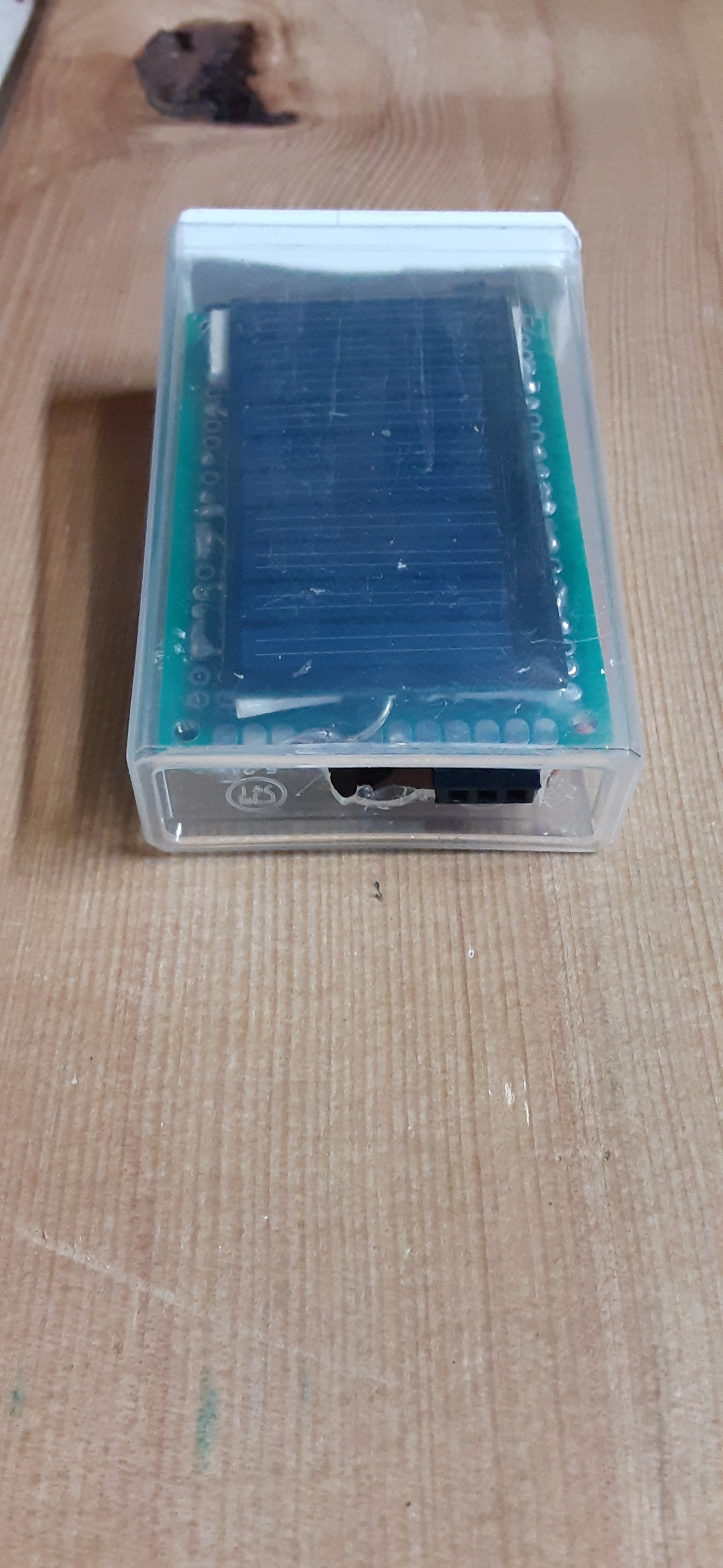I prefer designing a pcb and soldering components to that, but for the first one I often will make with protoboard.
It doesn't look pretty but the device is assembled and functioning properly.




Buttons are working great, as the attiny85 has no serial, and I don't intend on using software serial, I am writing most of my C code one function at a time on my PC, then transfering to arduino sketch once it is working.
I am using the LED's for debugging and it's actually quite intuitive once i got a system worked out.
The only thing left to do on the hardware of this device is print a label for the buttons/LED's. Other than that it is all code and see how many features i can pack into this thing.
 Gordon
Gordon
Discussions
Become a Hackaday.io Member
Create an account to leave a comment. Already have an account? Log In.